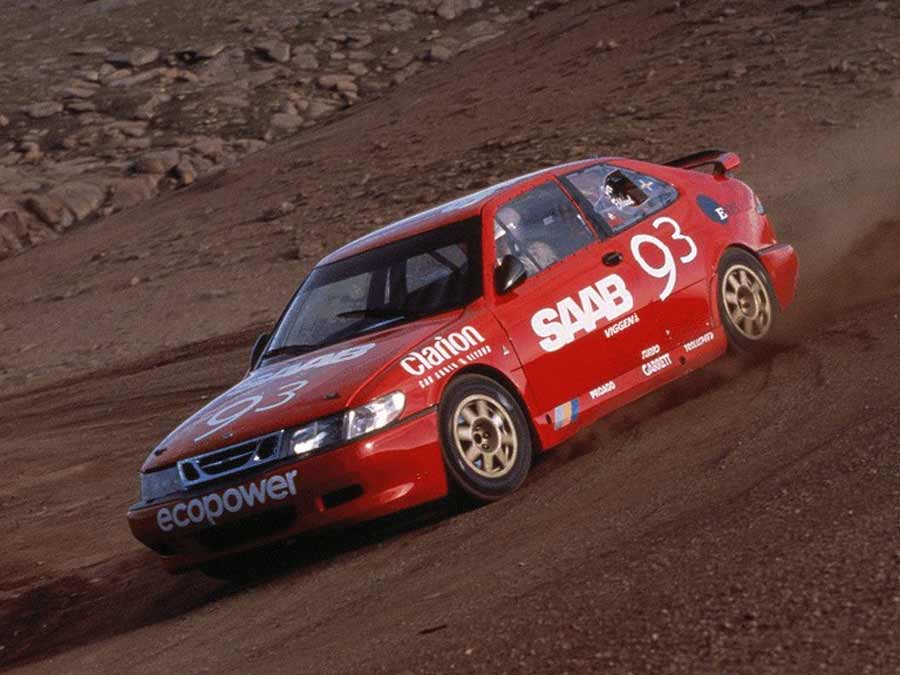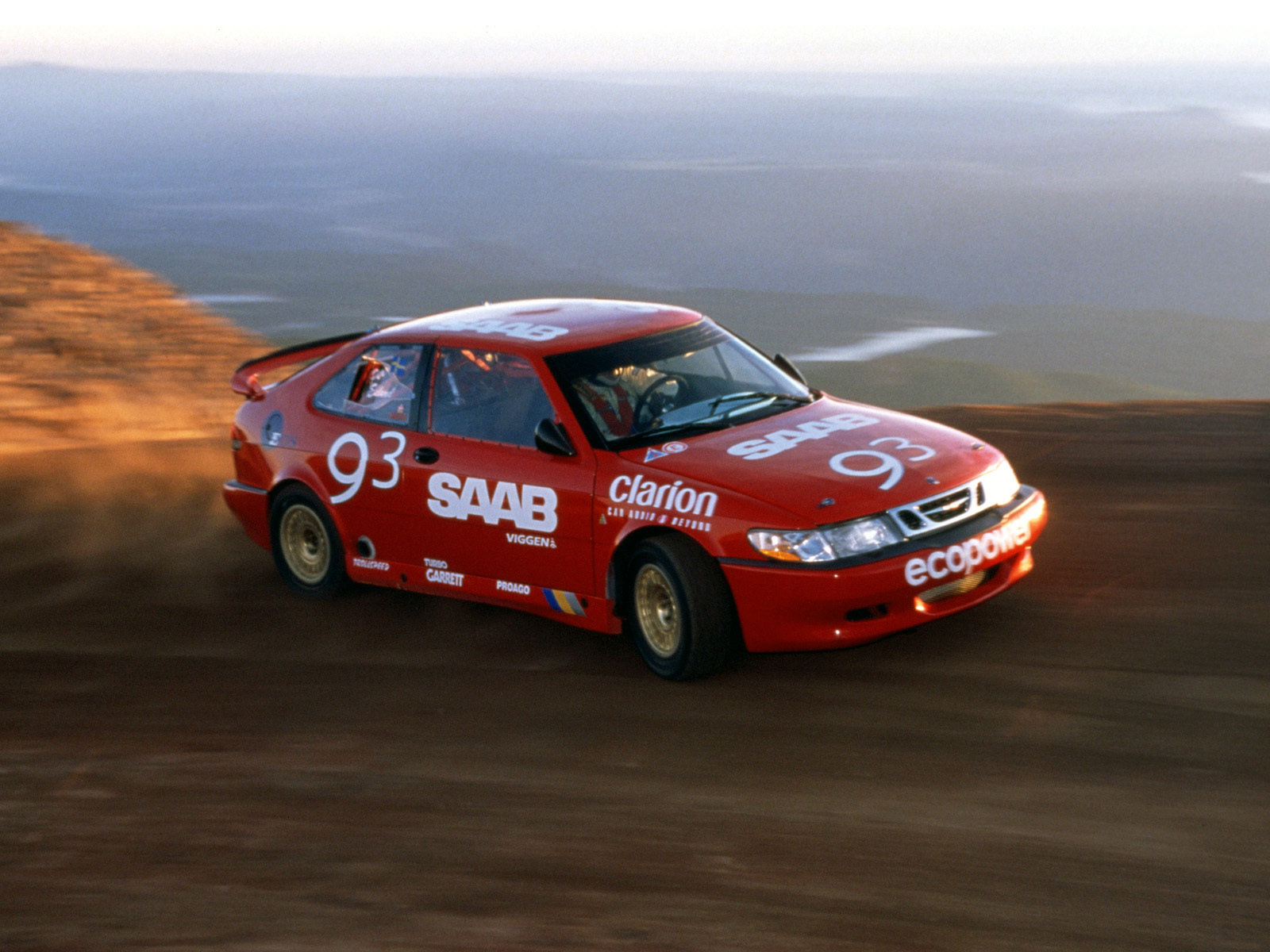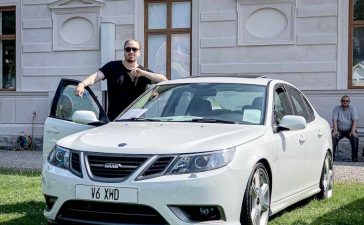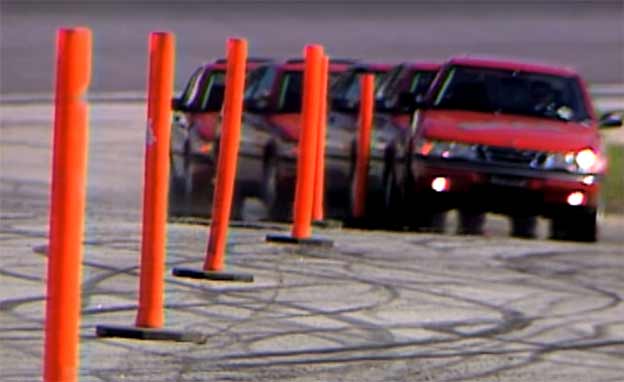Pikes Peak is arguably the most iconic hill climb ever. So when said that, it means that almost every rally driver dreams at least once in their career, of participating. However, that was the case for Per Eklund, European Rallycross Championship champion, who did it in 2000 with his Saab 9-3 Viggen, and then again in 2002. In 2000 Per Eklund achieved a record time of 11:21.58 in his Saab 9-3 Viggen 4×4 while racing the Pikes Peak Open category. After that result, In 2002 Per Eklund took the Unlimited Class Victory.
The results are known, but how Eklund managed to achieve this success, we will see in the next few lines.
Table of Contents
2000 Pikes Peak International Hill Climb
In 2000. for the sake of a new triumph, Per made a few changes to his record-setting Saab 9-3 Viggen. The car was basically the rallycross car and the changes are primarily made in the domain of suspension. The previous year he used a rallycross set-up, a fairly short-travel suspension with Avon bias-ply tires. And when he set a new record, he used long-travel rally type suspension, again supplied by the French Donnere and Michelin rally tires.

Selection of appropriate tires
While not the ideal tires for the paved sections of track, the Michelin radials have much better grip in the loose gravel off the racing line in the dirt sections and provided Eklund an extra margin of safety. The changes seemed to work as practice time s were good, but a tire puncture and transmission troubles qon race day relegated Eklund to a second-in-class finish.
Big Turbo for a Big Game
The big question was, “How do you get 760hp out of 2 liters using a stock block?” – Answer was – “Use a big turbo!” – Tommy Karlsson, engin-man at that time, used Garret’s T04S Turbo, which utilize a commercial diesel-type ball bearing cartridge in an air-cooled center housing.

With that big Garrett turbo supplying 2.2 bar of boost an and enough flow for 850hp, Karlsson values strength over lightness. At 32 psi and 8300 rpm, the engine produced 760 hp. The Torque peaks at 540 lb-ft at 6500 rpm. Normal redline was 9300 rpm with usable power from 5500 rpm through 8500. That was a maschine!
2002 Pikes Peak International Hill Climb
Beginning in 2002, the City of Colorado Springs, the party responsible for maintaining the Pikes Peak highway, began paving the 13 miles of road that led to the Pikes Peak summit in response to a lawsuit filed against it by the Pikes Peak chapter of the Sierra Club, which accused the City of violating the Clean Water Act because of all the gravel pollution caused by the aforementioned 13 miles of unpaved roads that led up to the summit.
This change in track conditions required huge changes in the domain of the engine setup, but especially the suspension and the appropriate choice of tires.
Rallycross Saab 9-3 in the prestigious Unlimited category
Per Eklund and his 760 hp purpose-built Viggen returned to Pikes Peak in 2002 for his third straight attempt on the mountain, but that time the avencular Swede threw away the rule book that had delineted his previous entries in the Open class and entered his rallycross 9-3 in the prestigious Unlimited category. But instead of just going after another class win, Eklund had decided to attempt to set the fastest overall time and become King of the Mountain. Eklund’s class record run two years earlier, at 11:21.3 had netted him second fastest time overall of the meet and encouraged his Saab engineering partners to start thinking about winning the climb outright.
Numerous improvements on the car
Eklund had returned ti his home workshop and completely reworked his self-designed and built Saab hillclimberwith the idea of beating all the single purpose racerswith some unique ideas of his own. Although Eklund’s Saab appears to be rather stock looking aside from its big wings, it was a pure racer under its carbon/fiber skin. After he reevaluated all the hardware he used during the 2000 race, he then strengthened the chaissis, lightened the car even further, using more carbon-fiber components, and the dropped in an upgraded engine: a stock-based 2.0-liter turbocharged Saab 4-cylinder engine, developed by Saab tuner TrollSpeed, that develops an incredible 750 hp at 8,000 rpm.
Thanks to the use of an even larger Garrett turbocharger, the developers have provided even more torque. Eklund had more than 540 lb-ft of torque comming off the corners… precisely because of such a large torque, the designers had to install larger wings. The engine was mated to a Prodrive 6-speed sequential transmission and a AWD system with two Prodrive programmable active differentials. With total weight of only 2,100 pounds (950kg), Eklund’s power-to-weight ratio works out to only 2.8 pounds per horsepower.
Aerodynamic modifications ensured a good result
His 2 previous years on that mountain had taught Eklund enough about the dynamics of the event to believe that the aerodynamic modifications might give him a chance to take the fastest time of the day. Additionaly, Eklund made significant change to the under surface – he added a splid diffuser to generate even more downforce. All these aerodynamic accessories have influenced the Saab car to increase the level of traction and thus the car speeds up in corners. However, on flat sections of the track, these additions were slowing down.
The Speed in the Corners
Eklund calculated well, it will save much more time in the corners, so the loss of time on flat parts of the track will not adversely affect the overall result. For him, the most important thing was the speed in the corners, because the track consisted of as many as 156 corners, which makes a total of 40% of the track. However, despite all the above, the biggest dilemma for Eklund was the choice of the right tires for a rather changed track. He chose the then new Michelin Rally tires because they offered the best compromise for the given conditions.
Also, Eklund complained about the training conditions – all trainings were held in the morning, while the race itself was planned for the early afternoon – the problem was the higher temperature, which could significantly affect the set-up of the car. And that’s not all, Eklund’s team had big problems with the turbocharger, and they even had to order one spare part that failed from Texas – which still arrived on time, before the qualifying races.
Per Eklund vs. Stig Blomquist
When race day came, it was an opportunity to fight two Swedish big car races – Per Eklund and Stig Blomquist. Like Eklund, Stig had big problems a few days before the race with his Ford RS200, blowing the massively turbocharged 4-cylinder engine. He had a spare engine available, but in England, which still could not be delivered on time. And after that, Stig achieved an enviably good result, but still behind the incredible Per Eklund. His ride was close to perfection, and by that point he had set a record score – 11:13.2
The rest of the story went down in rally history
Eklund’s result that day could have been endangered only by David Donner, who had a great start and we have two record passing times at the start. Then, just as quickly, it became obvious that Donner’s engine was overheating. By the middle of the track, his result was a record, even at the three-quarter mark of the track, Donner had 15 seconds better time than Eklund, but it was obvious that Donner overpowered the engine because he had already started to drain the water. Somehow, his V8 held togetheruntil the end, and Donner set the best overall time – 10:52.3
Eklund still pleased with his run. The Saab had run quicker than it ever had, a full 39 seconds faster than the Prodrive built Subaru WRX.











